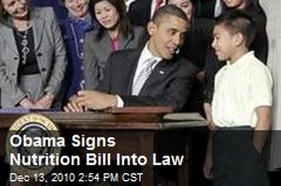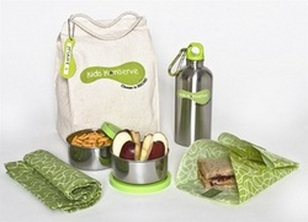Bought vs. Brought Lunches
Which is more nutritionally beneficial?
Abstract
We worked on a collaborative research project with the research question: Bought vs. Brought - which school lunch is more nutritionally beneficial? Our aim was break the two apart to distinguish what was being served in each meal.
To do so, we used video cameras to record interviews with individuals in the everyday action of this area. We also weighed school lunches against Obama Administration's nutritional value of school meals. Our findings supported bought lunches over brought. The bought lunches contained overwhelmingly more fruits and vegetables as well as low-fat milk.
To do so, we used video cameras to record interviews with individuals in the everyday action of this area. We also weighed school lunches against Obama Administration's nutritional value of school meals. Our findings supported bought lunches over brought. The bought lunches contained overwhelmingly more fruits and vegetables as well as low-fat milk.
Introduction
We set out to answer our research question by first finding two interviewees. Michelle Kong interviewed Beth Clark, the Food Service Director for Glassboro Public Schools. Jackie Bosworth interviewed Pamela Reilly, a teacher at Durand Academy and Community Services. After about four weeks of interviews and attempts at getting inside the actual school cafeterias, my teammates and I completed our project with our finding leaning in favor of our original aim.
What is Considered
Nutritionally Beneficial?
We decided to base our results on the Obama Administration's nutritional value of school meals instead of the food pyramid for a few reasons. The food pyramid represents suggested percentages for the daily diet of different food groups. That is not exactly what we were looking for. Instead of a daily diet, we were more focused on one specific meal during the day for children. Obama's Nutritional Bill has the same focus. We looked at his demand for an increase in the serving of vegetable, fruit, whole grains, and milk. Using those four criteria, we decided to investigate various bought and brought lunches to see which offered more of those.
Brought Lunches
We took a look at nine different brought lunches of students at Durand Academy. To investigate their meals, we made a checklist of the four criteria mentioned above: vegetables, fruit, whole grain, and low-fat milk. The table below represents our findings. Only two out of nine students brought vegetables, only two out of nine brought fruit, not one student brought whole grain, and not one student brought low-fat milk. These findings are quite shocking.
Bought Lunches
We then took a look at Glassboro School District Lunches online. Each day, we analyzed the food items being served, checking off whether or not they contained the criteria: vegetables, fruit, whole grain, and low-fat milk. The table below represents our findings. Fourteen out of the fifteen meals contained a vegetable, fourteen out of the fifteen contained a fruit, only two of the fifteen meals had whole grain, and all fifteen meals offered low-fat milk. We were pleasantly surprised with these results.
National School Lunch Program
We began researching Glassboro School district regulations for school lunches. Instead, we ran across Child Nutrition and WIC Reauthorization Act of 2004, which is commonly referred to as National School Lunch Program of 2004. This program was designed to help qualified students and children all over the country in receiving free or reduced priced lunches.
The policy reads "- each participating district must have adopted a wellness policy. Such a policy must include goals for nutrition education, physical activity, and other school-based activities that are designed to promote student wellness. Additionally, the policy must contain nutrition guidelines for all foods available on each school campus during the school day with the objectives of promoting student health and reducing childhood obesity. A district must also designate a person who will be responsible for measuring implementation of the policy. " It is good to know that our country is beginning to open the door to motives on decreasing the chance of obesity in children. The Obama Administration's nutritional value of school meals relates to the National School Lunch Program by making sure the children are not only fed each day during school hours, but are being fed nutritional healthy foods to increase their development.
The policy reads "- each participating district must have adopted a wellness policy. Such a policy must include goals for nutrition education, physical activity, and other school-based activities that are designed to promote student wellness. Additionally, the policy must contain nutrition guidelines for all foods available on each school campus during the school day with the objectives of promoting student health and reducing childhood obesity. A district must also designate a person who will be responsible for measuring implementation of the policy. " It is good to know that our country is beginning to open the door to motives on decreasing the chance of obesity in children. The Obama Administration's nutritional value of school meals relates to the National School Lunch Program by making sure the children are not only fed each day during school hours, but are being fed nutritional healthy foods to increase their development.
Brought Lunches At
Glassboro Middle School
National School Lunch Program
We began researching Glassboro School district regulations for school lunches. Instead, we ran across Child Nutrition and WIC Reauthorization Act of 2004, which is commonly referred to as National School Lunch Program of 2004. This program was designed to help qualified students and children all over the country in receiving free or reduced priced lunches.
The policy reads "- each participating district must have adopted a wellness policy. Such a policy must include goals for nutrition education, physical activity, and other school-based activities that are designed to promote student wellness. Additionally, the policy must contain nutrition guidelines for all foods available on each school campus during the school day with the objectives of promoting student health and reducing childhood obesity. A district must also designate a person who will be responsible for measuring implementation of the policy. " It is good to know that our country is beginning to open the door to motives on decreasing the chance of obesity in children. The Obama Administration's nutritional value of school meals relates to the National School Lunch Program by making sure the children are not only fed each day during school hours, but are being fed nutritional healthy foods to increase their development.
The policy reads "- each participating district must have adopted a wellness policy. Such a policy must include goals for nutrition education, physical activity, and other school-based activities that are designed to promote student wellness. Additionally, the policy must contain nutrition guidelines for all foods available on each school campus during the school day with the objectives of promoting student health and reducing childhood obesity. A district must also designate a person who will be responsible for measuring implementation of the policy. " It is good to know that our country is beginning to open the door to motives on decreasing the chance of obesity in children. The Obama Administration's nutritional value of school meals relates to the National School Lunch Program by making sure the children are not only fed each day during school hours, but are being fed nutritional healthy foods to increase their development.
Chicago School Bans Packed Lunches
While we were trying to research different websites that offer ideas on how to make brought lunches healthier and give parents healthy ideas, we found a website dealing with a Chicago school. Little Village Academy is a small school located in Chicago. Currently, they are battling the public per their new ban on packed lunches. "Nutrition wise, it is better for the children to eat at the school," Carmona told the Chicago Tribune. (miami herald website) Also included in this news article are the downfalls to not letting parents pack a lunch for their child. Money becomes a major controversy. What if the parents can't afford to shell out the cash that it costs to buy a lunch at Little Village? There is mention of exception to the rule if the child has food allergies. The reasoning behind the ban on packed lunches is proclaimed to be that a staff member realized that she saw more and more children bringing in things like soda and chips. It is stated that the school feels as though the children will benefit nutritionally from buying a school lunch.
Making Bought Lunches Healthy
Considering our research, it only makes sense to offer solutions to help parents pack a healthier lunch for their children. In conducting research online, we came across several helpful websites.
The website, green living ideas, shares different ideas for what is nutritionally beneficial to children in their lunches. Not only does it give lists of different options under the food groups, but it also explains why each of those foods is beneficial to a person's health. Not only is this website focused on the health and nutrition benefits of packing a healthy lunch, it also describes how you can keep our Earth eco-friendly by packing these foods waste-free.
WebMD offers many different ideas of what a possible packed lunch can consist of. The website shows different way that your packed lunch can contain healthy foods and still be an easy and cheap creation to make from home.
The website, green living ideas, shares different ideas for what is nutritionally beneficial to children in their lunches. Not only does it give lists of different options under the food groups, but it also explains why each of those foods is beneficial to a person's health. Not only is this website focused on the health and nutrition benefits of packing a healthy lunch, it also describes how you can keep our Earth eco-friendly by packing these foods waste-free.
WebMD offers many different ideas of what a possible packed lunch can consist of. The website shows different way that your packed lunch can contain healthy foods and still be an easy and cheap creation to make from home.
Afterword
I have never before worked on a Collaborative Research Project. The idea of the actual assignment is very interesting. I enjoyed communicating with my group in order to come up with a controversial topic to investigate through interviews. The concept of going out to schools and finding answers was new to me because i am used to researching through books and the internet. The hands-on experience was stressful, yet successful in finding our answer. The organization of our project and finding an agreed upon way of going about the research was a bit stressful, but we did it. Everyone had their own ideas and thoughts that they were passionate about. In time we decided to focus our research on bought vs. Brought lunches amongst two different schools. Despite all the stress, I think that my team members and I had a lot of fun and really enjoyed the project. Hopefully the outcome of our project represents the amount of time and work we put into making it all happen!





